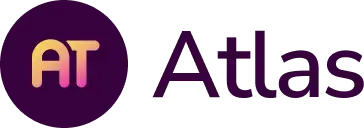This blog is adapted from a webinar with The Park School, as an Atlas customers, they used Atlas Reports and Unit Planner to implement this process, but most elements of the framework can be used by any school to refine their Curriculum Development process.
Materials Prepared by Pamela Penna, Director of Curriculum and Instruction, The Park School, MA
When The Park School in Massachusetts set out to refine its curriculum development process, Director of Curriculum and Instruction Pamela Penna knew that success hinged on more than just a new system—it required full staff buy-in. By pairing a clearly articulated vision with a phased, actionable plan, Pamela built the momentum her team needed to integrate collaborative curriculum mapping into their daily practice using Atlas.
Step 1: Planning with Purpose
Pamela began by leading staff in the creation of a “Why Map”—a shared vision that clearly communicated the purpose and benefits of mapping. Their message focused on:
- Streamlined onboarding for new hires through a centralized, easy-to-access curriculum repository.
- Increased collaboration by using maps as a shared planning space.
- Cross-curricular connections identified through curriculum analysis.
This vision framed mapping as more than documentation—it was a strategy for strengthening teaching and learning school-wide.
Step 2: Developing a Multi-Year Roadmap
Pamela and her team charted a three-year action plan that balanced ambition with sustainability:
Year 1 – Laying the Foundation:
Introduced curriculum mapping to the school community, piloted Atlas with three teacher groups, and developed “expert” templates based on early feedback.Year 2 – Expanding the Reach:
Added two more subject areas, with Year 1 pilot teachers serving as peer trainers and mentors.- Year 3 – Full School Implementation:
Began documenting all courses in Atlas, ensuring consistent templates and processes across the school.
Step 3: Sharing and Communicating
To keep the initiative visible and supported, Pamela embedded regular communication into existing structures:
- Monthly email reminders and progress updates.
- Dedicated time during division, department, and grade-level meetings to revisit goals, clarify expectations, and address questions.
- Ongoing professional learning focused on essential questions, differentiating skills from activities, and effective use of Atlas templates.
A key design decision was the 55:45 unit template ratio:
- 55% focused on teachers’ classroom needs—collaborative planning space, resources, and activities.
- 45% captured school-wide curriculum data for vertical alignment and administrative oversight.
Step 4: Revisiting and Supporting
Pamela’s team recognized that sustained engagement requires continuous support. They:
- Scheduled professional development throughout the year.
- Offered one-on-one or small-group coaching.
- Tailored training formats to meet diverse teacher needs.
By protecting teacher time for mapping, Pamela signaled administrative commitment, reinforcing that curriculum work was valued and supported.
Leveraging Atlas Reporting to Drive Collaboration
The Park School used Atlas’s analytics and reporting tools to make mapping work immediately actionable:
- Search Report: Helped give teachers context as they worked together to design curriculum. As teachers design new units of instruction, it's helpful to know the previous exposure students have had to specific topics. With the search reports, for example, an 11th grade history teacher can easily look to see when and where students first learned about "primary documents".
- Comparative Unit Calendar: As teachers sit down to collaborate, the conversation quickly turns to what each teaches and when. The comparative unit calendar report allows teachers to overlap two courses in order clearly see the units taught over the course of a year. This alone can prove invaluable in identifying areas for cross curriculum collaboration. And when the conversation shifts to looking at a unit in more detail, this report allows one click access to see the unit template.
- Scope and Sequence Reports: In preparation for professional development, Pamela's team decided to give their consultants the requisite course information in advance by sharing Atlas reports. With the course knowledge at their fingertips, the consultants were able to easily gather context about their curriculum and immediately dive into the conversations around improving student performance.
Once Pamela and her team saw how helpful the reports were with supporting their professional development work with a consultant, they decided use those same reports as teachers worked collaboratively to apply what they learned during their professional development sessions to create and revise essential questions. This really brought the curriculum to life, as teachers were able to refer to each other's work, get ideas and support each other. Equally important, it demonstrates that the time they had spend mapping their curriculum had real value.
These reports transformed curriculum maps into living resources, fostering teacher-to-teacher idea sharing and collaborative problem-solving.
Next Steps: Continuous Improvement
Recognizing that curriculum mapping is a “never-ending process,” The Park School introduced a mock review process—teachers share units for peer feedback to ensure consistency and stimulate dialogue.This review process allows for another individual in the school to interpret your unit and provide feedback. This collaborative approach fosters consistency, conversation, and coaching opportunities.
Moving forward, the school aims to:
- Build teacher independence in mapping.
- Explore more of Atlas’s capabilities to deepen instructional impact.
- Use maps not just for documentation, but for continuous improvement in teaching and learning.
Key Takeaway
Pamela’s success at The Park School demonstrates that building curriculum buy-in is about more than adopting a platform—it’s about uniting educators around a shared purpose, supporting them with the right tools, and creating a culture where curriculum is a collaborative, evolving asset.

